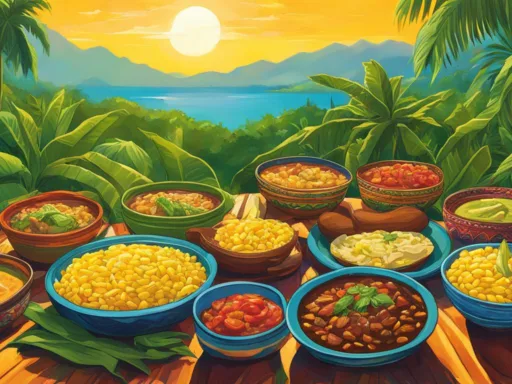The cultural tapestry of Italy is rich with linguistic variety, hosting a spectrum of languages that span from the officially recognized Italian language to a mosaic of regional Italian dialects and minority tongues. Beyond the prevalent Italian language, the nation cherishes its heritage of languages spoken across different regions of Italy, each carrying distinct historical significance and cultural identity.
Serving as one of the official languages Italy has designated, Italian is the lingua franca of this vibrant nation, yet the linguistic landscape is far from monolithic. From the Alpine heights of the north to the sun-kissed shores of the south, an array of dialects and languages are spoken. This diversity illustrates Italy’s long-standing commitment to preserving its linguistic heritage and promoting bilingualism and multilingualism in its population.
Whether it’s the coherent but varied Regional Italian or the quite distinct minority languages, such as German in Alto-Adige or French in Aosta Valley, each language enriches the cultural dialogue and adds to the complexity of what it means to be Italian in today’s interconnected world. Embracing the languages spoken Italy offers insight into the lives and histories of its numerous communities, as vivid and diverse as the landscapes they inhabit.
Key Takeaways
- Italian is the predominant national language of Italy and one of its official languages.
- Regional Italian dialects, deeply rooted in local history, contribute significantly to the linguistic intricacy of the country.
- Italy officially recognizes twelve languages spoken by various linguistic minorities.
- Languages such as German, Slovene, and French have substantial bilingual communities and enjoy official recognition in particular regions.
- Understanding the diversity of languages spoken Italy offers a window into the nation’s rich cultural heritage.
- Official languages Italy, including Italian and the recognized minority languages, reflect the country’s commitment to linguistic diversity.
Introduction to Italy’s Linguistic Landscape
The quilt of languages draping over the Italian peninsula tells a story of cultural convergence and divergence, united under the umbrella of Romance languages in Italy. In the midst of this rich linguistic diversity sits Italian, carving its place not only as the official language but as a bridge connecting over 60 million souls across the nation. Italian’s journey, which began rooted in the dialects of medieval Tuscany, has seen the language blossom into the voice of Italy. Yet, beyond the grasp of Italian, there exists a realm of local languages and dialects that breathe life into the concept of bilingualism in Italy.
The palette of indigenous languages includes not only Italo-Dalmatian dialects but also languages from the Germanic, Albanian, Slavic, and Greek families. Italian may hold the scepter as the most widely spoken language, but it shares the land with twelve recognized linguistic minorities. Among them, Sardinian stands as a testament to Italy’s ancient linguistic roots, with around one million speakers lending their voice to its legacy. This entangled landscape of tongues surpasses the mere notion of communication, etching into every word the rich tapestry of Italy’s cultural and historical legacy.

As the heartland of the Roman Empire, Italy not only inherited but also nurtured the growth of the Romance languages, now a cornerstone in the symphony of its culture. Stretching from valleys to coastlines, languages such as Ladin, Friulian, and Griko continue to echo the ancient rhythms of history, each with its own cadence and story.
- Bilingualism in Italy is not an exception but a norm in many areas, where layers of language exist side by side.
- Legal recognition preserves the linguistic identity of communities, embracing the cultural nuances that define them.
- The preservation and study of local languages contribute to a deeper understanding of Italy’s multicultural identity.
In this entwined linguistic landscape, the pursuit of communication seamlessly integrates with cultural preservation, ensuring that the voices of the past continue to find resonance in the present and futures of Italy’s diverse regions. From the towering Alps in the north to the warm Mediterranean shores of the south, the myriad Romance languages in Italy and heralded instances of bilingualism in Italy speak volumes of a nation that holds its history and heritage in high esteem.
Languages Spoken in Italy: Regional and Minority Tongues
Italy’s linguistic heritage extends far beyond the official national language. The country is a bastion of linguistic diversity, with a profusion of Italian dialects spoken across its many regions, alongside a number of minority languages Italy officially acknowledges. These tongues form an integral part of the cultural landscape and are vital to the identities of various Italian communities.
From the romantic undulations of Venetian to the lyrical cadences of Neapolitan, regional variations of Italian paint a vibrant linguistic picture of Italy. Yet, amidst this colorful array are languages that chart their own historic courses, contributing to the complex linguistic tapestry that is uniquely Italian.

Regional Italian and Its Variations
The term “Regional Italian” refers to the localized forms of standard Italian, each tinted with the unique phonological and lexical traits of the regional dialects. While intercomprehension remains high amongst these regional tongues, their distinct flavors spotlight the varied linguistic histories of Italy.
Twelve Recognized Minority Languages
In appreciation of this plurality, Italy has officially recognized twelve languages as spoken by historical linguistic minorities. Each of these official languages Italy upholds, ranging from German spoken in Alto-Adige to the Croatian found in Molise, enjoys legal recognition and protection to safeguard the country’s invaluable linguistic mosaic.
| Recognized Language | Region of Italy | Approximate Number of Speakers |
|---|---|---|
| Sardinian | Sardinia | 1,000,000 |
| Friulian | North-Eastern Italy | 600,000 |
| Ladin | Dolomite Mountains | 30,000 |
| Slovene | Trieste and Gorizia areas | 100,000 |
Sardinian: A Language of Its Own
Among these minority languages, the Sardinian language claims a distinctive identity in the medley of Romance languages, as reflected in its two principal varieties—Logudorese and Campidanese. Despite the language’s declining use, it persists as a symbol of cultural identity for around 1.7% of the Italian population who regularly communicate in Sardinian, justifying why minority languages Italy are not just statistics, but stories of resilience and culture.
The History and Influence of the Italian Language
The Italian language, an emblem of cultural identity and historical progression, has woven its narrative through the ages to become what is today spoken by approximately 93% of Italy’s population. Grounded in its Tuscan Italian origins, the language serves as a living echelon of lineage, closely tethered to the Latin from which it evolved. It is the Tuscan dialect, which, under the quill of the illustrious Dante Alighieri, laid the cornerstone for modern Italian fluency and pronunciation.
Dante’s seminal work, “The Divine Comedy,” not only fortified the Italian lexicon but also ignited the vernacular’s ascent to becoming the foremost means of poetic and scholarly expression. The Tuscan dialect, which Dante refined and championed, paved the way for a standardized language that surpassed regional boundaries, ultimately uplifting Italian to unprecedented eminence among the Romance languages.
Despite its omission as the official language within the constitution, Italian’s dominion is undisputed in the legal realm and remains a pervasive force, compelling in both communicative prowess and as one of the working languages of the Council of Europe, reaching 85 million speakers globally.

The richness of Italian pronunciation witnessed today mirrors a chronicle of linguistic evolution, with the breath of regional nuances shaping its contemporary sound. The pursuit of Italian fluency is a quest not only to master the fundamentals but to partake in the soulful expression of a culture steeped in artistic and scholarly heritage. The influence of Tuscan Italian, with Florence as its nucleus, extends its reach far beyond the borders of Italy.
While other languages and dialects contribute to the rich tapestry of Italy’s linguistic landscape, it is the universality and artistry of Italian that endures as a testament to the country’s enduring allure. From the Arno’s banks to the furthest corners of the globe, Italian remains a language synonymous with literary and cultural finesse, underpinned by the extraordinary contributions of Dante Alighieri and his Tuscan legacy.
Foreign Languages in Italy: Integration and Education
Italy’s cultural richness is accentuated by the influence of foreign languages, reflecting the country’s evolving multicultural fabric. Amidst the historical chorus of indigenous and regional dialects, languages such as Romanian, Albanian, Arabic, Chinese, and Ukrainian emerge as the new voices of Italy, contributing to the nation’s linguistic pluralism. In the bustling streets of Italian cities, the harmonious intersections of these languages testify to Italy’s integration of diverse communities. This dynamic creates a fertile environment for Italian language schools, where learners embrace multilingualism as an educational pursuit and a bridge to wider cultural dialogues.
Immigrant Languages: The New Voices of Italy
In the ever-changing demography of Italy, immigrant languages continue to play a pivotal role, signaling the breadth of Italy’s demographic shifts. With the increasing presence of these languages comes a multifaceted society, rich in expression and perspective. It’s an exciting epoch, as the friendly whispers of Romanian, the musical intonations of Albanian, and the resonant conversations in Arabic, Chinese, and Ukrainian embellish the fabric of Italian culture with patches of linguistic diversity.
Language Learning: Multilingualism in Italian Society
The pursuit of language mastery extends beyond the native phrasings to the celebration of foreign tongues within Italy. Multilingualism is embraced within Italian society, acknowledging the value of diverse linguistic capabilities in our globalized era. Italian language schools stand at the forefront of this educational paradigm, fostering an atmosphere where fluency in multiple languages is not just an academic attainment, but also a catalyst for cultural respect and international synergy.
Italian Sign Language: Recognition and Communication
Completing Italy’s comprehensive linguistic repertoire is Italian Sign Language, a visual form of communication recognized for its uniqueness and importance. Its official designation speaks to the nation’s inclusive approach to dialogue and represents an awareness and sensitivity to the full spectrum of linguistic expression. For deaf individuals and communities, Italian Sign Language is not only a means of daily interaction but a significant cultural touchstone that resonates with both heritage and innovation.
FAQ
What languages are spoken in Italy?
In Italy, the official language is Italian, and it is widely spoken throughout the country. In addition to Italian, there are a variety of regional languages and dialects, many of which belong to the Romance language group. There are also twelve officially recognized minority languages such as German, Slovene, and French, particularly spoken in regions with substantial bilingual communities.
What are the characteristics of Italy’s linguistic landscape?
Italy’s linguistic landscape is incredibly varied, with a mix of different languages and dialects coexisting. This vibrant scenario includes not only the standard Italian language and its regional variations but also a host of minority languages that are officially recognized and protected. Moreover, bilingualism is quite common in several parts of the country, especially in regions where minority languages are spoken.
How do regional Italian dialects differ from standard Italian?
Regional Italian dialects can differ significantly from the standard Italian both in terms of vocabulary, pronunciation, and grammar. These dialects have evolved locally, may have distinct historical origins, and in some cases, they are so different that they are considered separate languages. Examples include Neapolitan and Sicilian. The differences can be profound enough that speakers of different dialects may not always understand each other without learning the standard language.
Which minority languages are officially recognized in Italy?
Italy officially recognizes twelve minority languages, which include Ladin, Friulian, Occitan, Franco-Provençal, Slovene, German, Croatian, Greek, Albanian, Catalan, Sardinian, and Walser. These languages are spoken by specific linguistic communities, and the government provides measures to protect and promote their use within their regions.
Why is the Sardinian language notable among Italy’s linguistic minorities?
The Sardinian language stands out among Italy’s linguistic minorities because it is the largest of such groups in terms of speakers, with roughly one million individuals using it. It has a unique identity within the Romance languages, featuring distinct phonetic and grammatical characteristics. Its status has been reinforced by official recognition, and efforts are underway to preserve and revitalize it.
What role did Dante Alighieri play in the history of the Italian language?
Dante Alighieri, the illustrious poet and writer, played a pivotal role in the history of the Italian language. His most renowned work, ‘The Divine Comedy,’ is credited with establishing Tuscan dialect as the basis for the modern Italian language. Dante’s use of the vernacular as opposed to Latin in his writings greatly promoted the spread and acceptance of Italian as a literary language during the 14th century.
What immigrant languages are currently found in Italy?
Italy is home to a variety of immigrant languages as a result of increased migration. Some of the most widely spoken immigrant languages in Italy include Romanian, Albanian, Arabic, Chinese, and Ukrainian. This reflects Italy’s growing multiculturalism and adds an extra layer to the country’s linguistic diversity.
How important is multilingualism in Italian society?
Multilingualism holds significant importance in Italian society. The education system promotes learning multiple languages, which is considered beneficial for cultural understanding and economic opportunities. Italian language schools are prominent and numerous, providing not only instruction in Italian to foreigners but also in other languages to Italians.
How is Italian Sign Language recognized within Italy?
Italian Sign Language (Lingua dei Segni Italiana, LIS) is officially recognized in Italy and has an important place within the country’s communication framework. It is a fully-fledged language with its own syntax and grammar, and its recognition is a testament to Italy’s commitment to inclusivity and acknowledging different modes of communication for the deaf and hard of hearing community.






